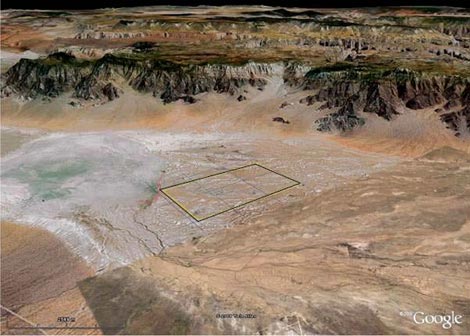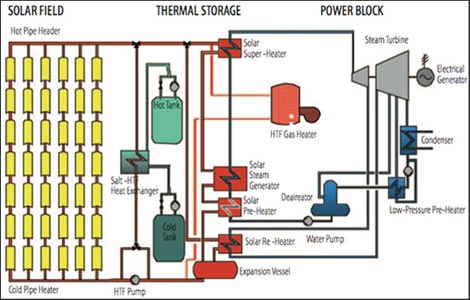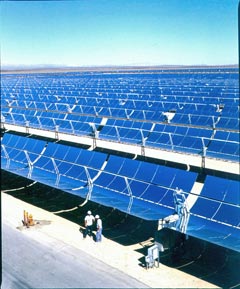Four thousand acres of private land in the Mojave desert are slated to become the site of an ambitious new concentrating solar power (CSP) plant: Hualapai Valley Solar (HVS). Named one of the Top 100 US Strategic Infrastructure Projects by CG/LA Infrastructure LLC, HVS is expected to produce 340MW of electricity, provide hundreds of new jobs and attract new business to the local area.There’s only one problem — water.
 HVS will consume an estimated 800 million gallons of water each year, placing significant pressure on the local aquifer. According to an article in the Kingman Daily Miner:
HVS will consume an estimated 800 million gallons of water each year, placing significant pressure on the local aquifer. According to an article in the Kingman Daily Miner:
…the water issue may remain a substantial hurdle for HVS in the coming months, since the Mohave County General Plan states that the county will only approve power plants using air-based “dry cooling” technology when the aquifer is threatened with depletion or subsidence. An advisor to the project, Chris Stephens, has maintained that the aquifer holds more than enough water to accommodate the next century’s worth of growth.

 In a bold move to keep the project alive, the nearby city of Kingman, Ariz. has agreed to explore the possibility of providing treated city wastewater to help power and cool the project’s steam turbines. Kingman will explore the feasibility of delivering “treated effluent” from its Hilltop Wastewater Treatment Plant to the HVS site. Preliminary estimates show that the city could provide more than half of the water that HVS will require. If the numbers pencil and the water issues can be resolved in a timely manner, HVS hopes to begin construction in November 2010 and open for operations by June 2013.
In a bold move to keep the project alive, the nearby city of Kingman, Ariz. has agreed to explore the possibility of providing treated city wastewater to help power and cool the project’s steam turbines. Kingman will explore the feasibility of delivering “treated effluent” from its Hilltop Wastewater Treatment Plant to the HVS site. Preliminary estimates show that the city could provide more than half of the water that HVS will require. If the numbers pencil and the water issues can be resolved in a timely manner, HVS hopes to begin construction in November 2010 and open for operations by June 2013.
While the treated effluent cooling solution is to be commended, HVS would still put significant pressure on the local aquifer even after using all the city wastewater. We wonder if there is another possible solution to the turbine cooling problem. This situation highlights the desert southwest’s resource allocation dilemma: an abundance of one resource, solar energy, and a scarcity of another required to harvest it, water.
And the water issue is not going away. Scientists at Scripps Institution of Oceanography last year forecast that “within 13 years Lake Mead and Lake Powell along the Colorado River, the two largest reservoirs in the southwest United States, could become ‘dead pool’ mud puddles.” (Read more in Alex Steffen’s recent feature, Dead Pool.) In our haste to develop subsidized, renewable energy resources are we losing sight of the bigger picture?
We’ll be keeping an eye on HVS here at Worldchanging. Each new, renewable energy project that comes online puts us one step closer to a carbon neutral world. To do this while preserving and protecting our planet’s fragile ecosystem is real, sustainable change, and that’s change worth celebrating.
By Daniel Flahiff
Source: http://www.greendesign.com/
Dear User/Visitor! Please, answer on our questions: tick off one of the positions – your answer will make us able to improve our site and make it more interesting and useful!

